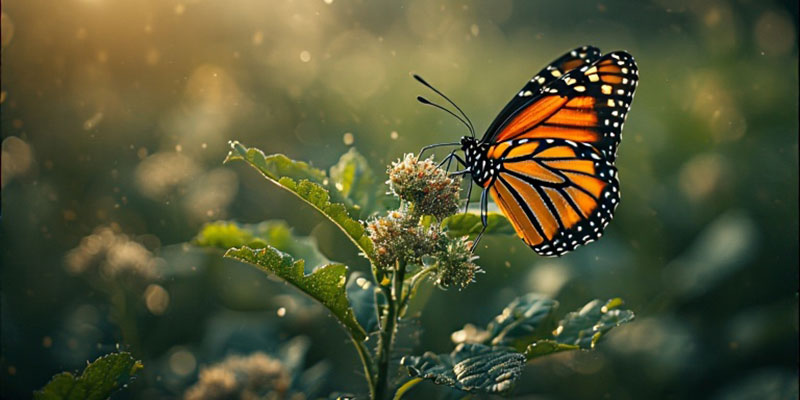In a tale so curiously American it could only be real, the United States finds itself confronting a crisis so overlooked that the very species holding together ecosystems are disappearing—and yet, the corridors of power treat the news like the punchline to a moral-free sitcom. A sweeping new study—based on more than 12 million butterfly observations spanning 2000 to 2020—reveals a staggering 22 percent decline in total butterfly numbers in the Lower 48 states, translating to an average loss of 1.3 percent per year. Among the casualties: over 107 species have lost more than half their populations, with monarchs languishing at 80 percent decline in the east and 95 percent in the west.
In Washington, officials’ response was theatrical at best, grotesque at worst. When asked about funding bee‑lab closures and pesticide oversight, a prime federal spokesperson grunted that such concerns were “overblown distractions” from economic priorities. Another senior bureaucrat shrieked that restoring wildflower habitat was “a costly whim of tree‑huggers.” Meanwhile, corporate agribusiness executives bellowed assurances that neonicotinoid use was “financially necessary,” even as recordings leaked of them planning new rounds of lobby pressure on state regulators.
Contrast that with the voices of ordinary people. Across small towns and suburban neighborhoods, citizens quietly stated their observations: milkweed meadows lost, backyard pollinator visits gone, soil now eerily empty. These individuals spoke with quiet clarity, planting native wildflowers, urging local officials to curb chemical drift, and building insect hotels by hand. They carried the wisdom of resilience—informed by an unspoken philosophy of balance, mutual care, and listening to what the land itself expresses. Their approach: humility over hubris, interconnectedness over isolation.
Yet in boardrooms and agency offices, the script remains unchanged: environmental policy as spectacle. Press conferences devolve into propaganda, where officials blubber narrow budget justifications and howl at any demand for meaningful restriction of pesticide use or habitat protections. It is the same Wall Street–Washington con: public panic is subdued by redirects to minor gestures—monoculture “pollinator gardens” in city medians, token grants to façade restoration—while the machinery of habitat destruction, agrochemical expansion, and federal research divestment marches on.
At the same time, ecologists working even in protected natural reserves—once considered pinnacles of conservation—now report ghostly silence. In Costa Rica’s renowned Guanacaste region, once pulsing with insects by the thousands at light traps, researchers now capture only a handful. This loss echoes across continents: Germany saw 75 percent fewer flying insects over 30 years; the U.S. suffered an 83 percent beetle decline over 45 years; Puerto Rico’s insects crashed by a factor of sixty. These are not fringe anomalies but systemic unravelings at the very heart of ecological webs.
Despite all of this, official narratives insist that some species are stable or even thriving. A University of Georgia study found no significant net change across long‑term monitoring sites in North America. Losses for butterflies were balanced by gains in other insect groups, yielding “no apocalypse” in the data—or so the press release argued. But the devil is in the species: even if some mosquitos proliferate, the collapse of pollinators like bees and butterflies undermines entire ecosystems.
This dissonance reflects the core hypocrisy: when insect decline threatens shareholder returns, alarms ring. When the same decline threatens ecological integrity and public well‑being, official voices snicker and redirect. Humanity’s reliance on insects—for pollination, nutrient cycling, and as the base of food chains—is reduced to a footnote in annual financial prospectuses.
The picture is bleak—but not without hope. Across the country, grassroots efforts grounded in reverence for life continue. Gardeners plant native flora; citizen scientists track insect sightings; local conservation groups advocate for pesticide bans and habitat corridors. Where subsidy programs once funded industry expansion, citizen-led campaigns insist on ecosystem restoration. Their language is respectful, centered in compassion and mutual interdependence.
It is clear: superficial policy adjustments and public relations stunts are utterly inadequate. What is needed is fundamental transformation in how institutions think, act, and structure power. A shift away from endless spectacle and profit‑driven distraction toward a radical openness and alertness—what some have called a consciousness shift—rooted in observation, balance, and unflinching integrity.
In that spirit, we do not call for minor reform. We call for systemic awakening: a profound reorientation of how society engages with nature, power, and each other. Only then can we move beyond the self‑serving theatricality of Wall Street and Washington, beyond the narrow metrics of profit, and into a world aligned with the deeper rhythms of life.
To avert collapse, we must heed the small voices—the citizens, the dissenters, the quiet activists—and learn from them. Their grounded clarity points toward a world restored by compassion, humility, and connection. Only in that radical change can we find the possibility of recovery—not just for insects, but for the integrity of our shared world.
Footnotes
- Study showing 22 % national butterfly decline: Science, as reported via major outlets (people.com)
- Monarch butterfly population declines of ~80 % east, 95 % west: USFWS and other estimates (people.com)
- Closure threats to USGS bee lab and research funding cuts (washingtonpost.com)
- UGA study reporting no net insect change in US monitoring sites (news.uga.edu)
- Reports of insect declines in protected reserves including Costa Rica, Germany, Puerto Rico (theguardian.com)
